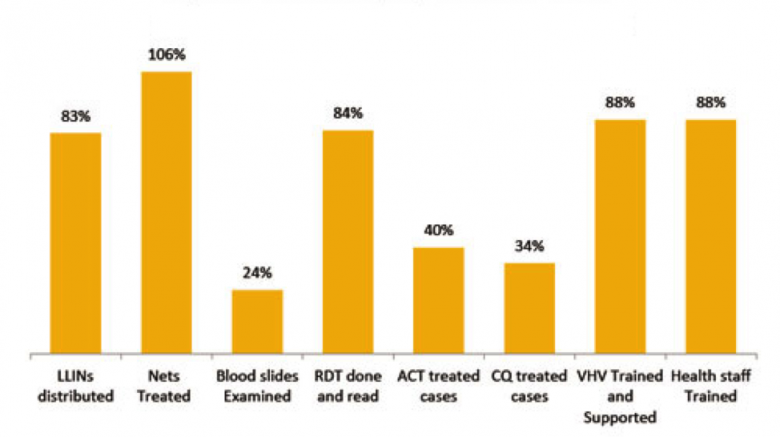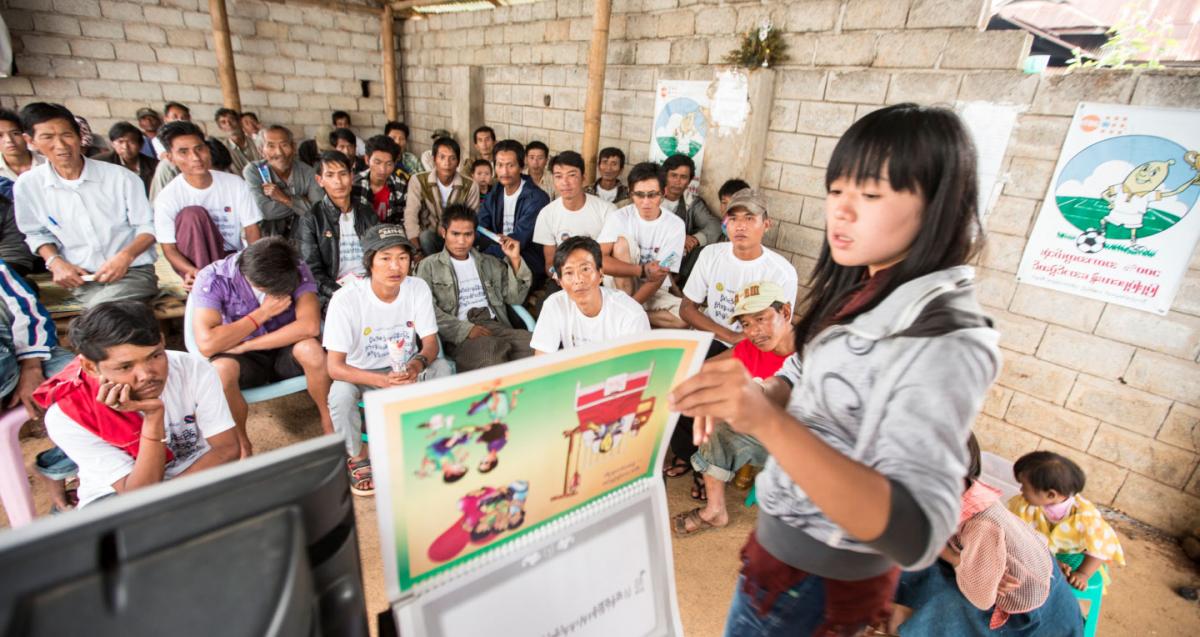
The cumulative results in each period are shown against annual target in the percentages. LLINs Distributed and Nets treated are funded by the Global Fund only while the others are funded by GFATM and other donors.
During Year 2 a massive and rapid scale-up of ITNs and LLINs distributions in high and moderate risk villages were organized, where 617,869 LLINs (83% of the target) were distributed. The accelerated mass campaigns also included bed net treatment where 1,934,673 (106%) nets treated with KO tablets in high and moderate risk villages. Malaria control services were further strengthened with the empowerment of 4,169 (88 %) village health volunteers through trainings both in prevention and treatment seeking and in prevention and case management of malaria.
In addition, 13,079 (88%) health staff were trained or retrained on how to identify signs and symptoms of malaria. The number of malaria cases treated was less than planned, at 266,470 (40%) confirmed malaria cases treated with ACTs and 137,263 (34%) people (probable and confirmed cases) treated with chloroquine.
For each of the three disease programmes, all SRs on close collaboration with UNOPS have used lessons learnt in Phase I to prepare Phase II work plan to improve on observed shortcomings while sustaining gains made with a view to reducing the burden of the diseases and their socio-economic effect in high risk or endemic areas.


